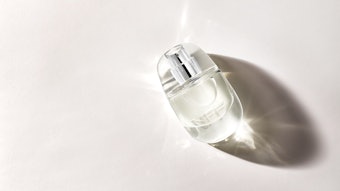The art of creating a fragrance and the art of deslgning a bottlfe to contain it goes back centuries. The combination of these arts has resulted in fragrance images that are legendary. “Scents of Time” is an international museum exhibition sponsored by the Fragrance Foundation and conceived of by Annette Green, its executive director. I am proud to be serving as its chairman. It will open in October at the Museum of the City of New York and will deal with these images: how fragrance has affected society from 1700 through the 1950s in terms of the perfume, its bode, its name, the advertising and the presentation.
Imagine a tableau of the 1920s depicting the dramatic new influences of the decade—a photograph of the greatest achievement in architecture, the skyscraper; Chanel’s new look modeled by a mannikin of the period seated at an art deco mirrored dressing table on top of which sit several of the great fragrances of the 1920s: Caron’s Nuit de Noel, Lanvin’s Arpege and Guerlain’s Shalimar, displayed as the art objects they were intended to be. In this period setting would be a famous Cartier mystery clock letting us know that scents of time can strike at any hour.
Perfume containers have been created as art throughout the centuries. Museums and private collections abound with exquisite examples of perfume flacons from renaissance to art deco. Perfume bottles have been designed both to please and amuse the consumer and to contain and connote the essence itself.










